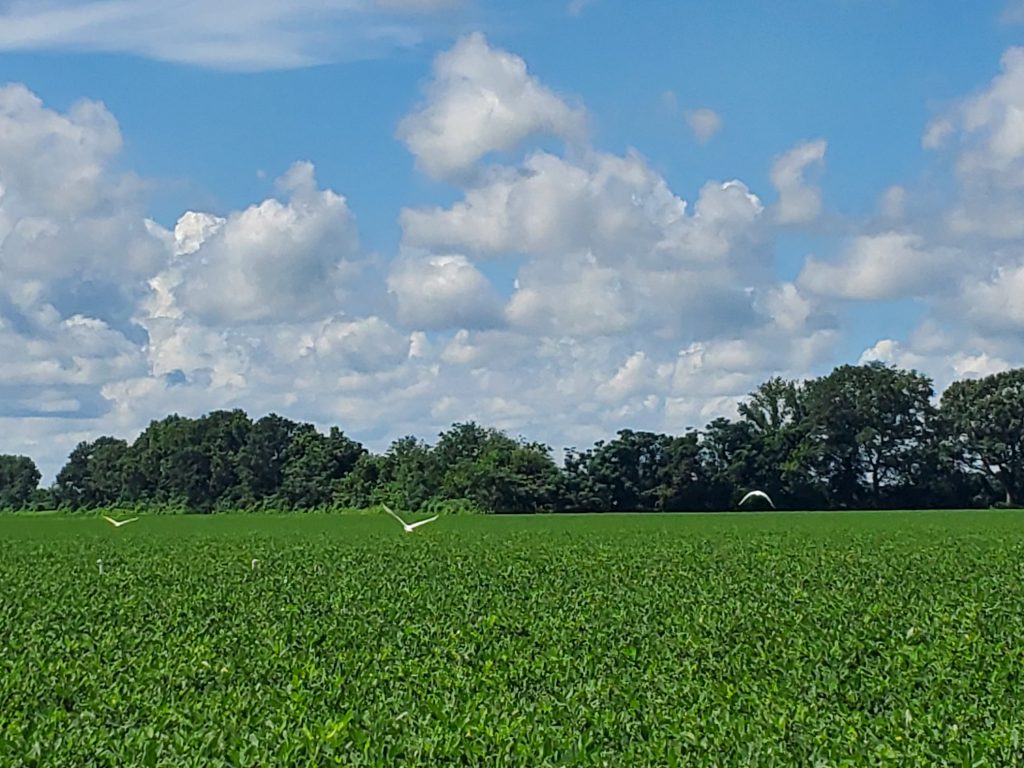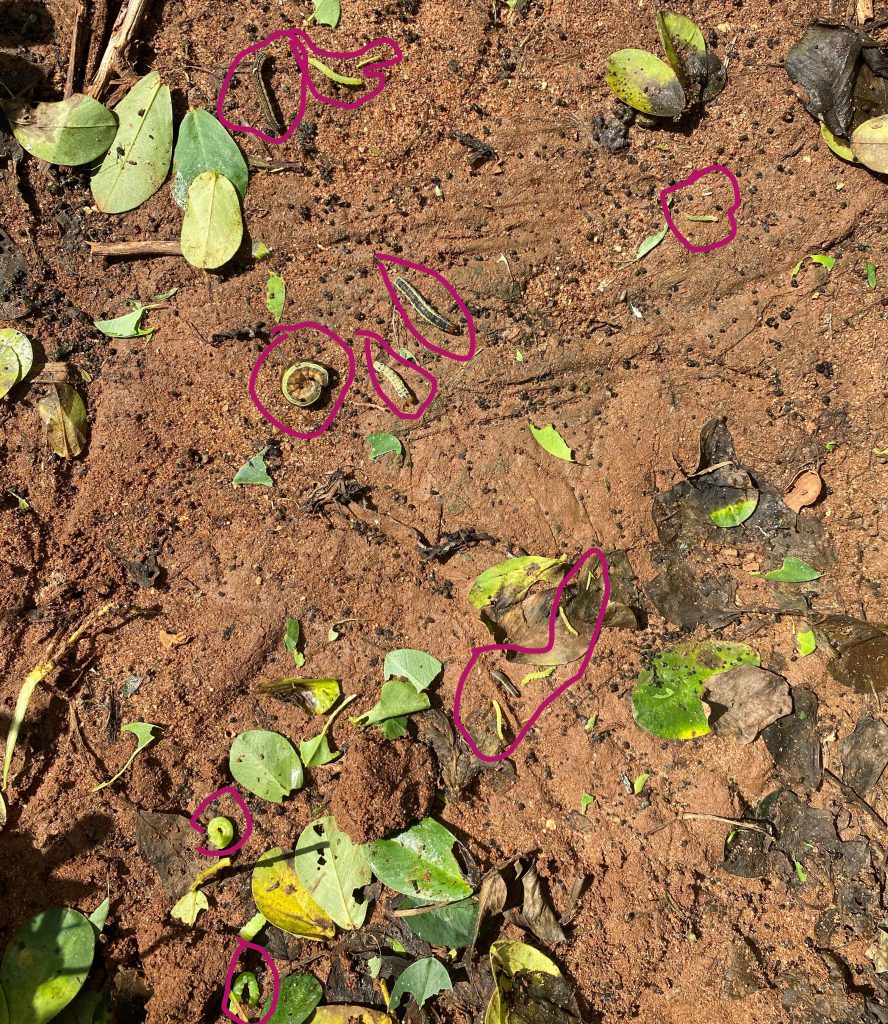
It’s early August, and the peanuts are looking pretty in Santa Rosa County from all the rain we’ve received. Driving around last Friday, I stopped in a peanut field to visit with a grower about TSWV, and we noticed a lot of birds in the field.Cow birds love to enjoy poking around peanut and bermudagrass fields, feasting on caterpillars. Looking down at the plants, I could see a lot of leaf damage, another indicator of caterpillars. See picture below.

=
When we walked down a row, I casually said, “Let’s look for worms.” He knew that he had them and was planning on making a spray this past week (August 8-12), but he humored me and bent down and beat down about two foot of vines.

The picture above shows some of the worms we found, but I didn’t even highlight all the small ones. The treatment threshold for foliage feeding caterpillars in peanuts is 4-8 larvae/row ft.
- The low level of four caterpillars/row ft. should be used if the peanuts are small and/or stressed.
- The higher level of eight caterpillars/row ft. may be used if the middles have lapped or close to lapping.
- Also, the higher threshold level is acceptable if peanuts are healthy and vigorously growing. Depending upon the type of foliage feeder present, there are numerous insecticide treatment options.
For a good update on caterpillars, please review Dr. Abney’s Mid-July Insect Update. Not all fields need to be sprayed, but all growers need to scout to make sure that the best yields come when picking in September and October.
